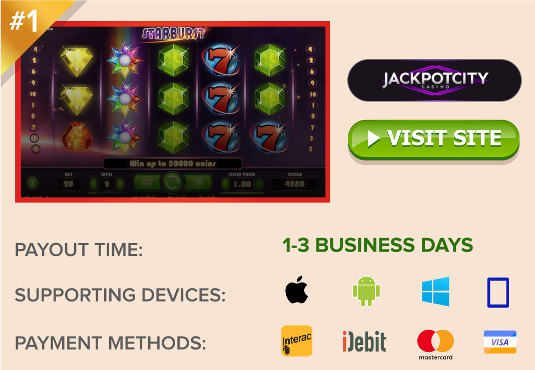Double 21 Rules and Optimal Strategy
How to play Double Blackjack, the best 21 game for Pai Gow Poker fans who seek something more interesting.
 Double Blackjack is what many consider to be the perfect combination of 21 and pai gow poker. I’ve found there are two very distinct types of players who discover this game. If you like pai gow poker, you’ll love double blackjack. On the contrary, if you hate pai gow poker, close this page now – you’re wasting your time.
Double Blackjack is what many consider to be the perfect combination of 21 and pai gow poker. I’ve found there are two very distinct types of players who discover this game. If you like pai gow poker, you’ll love double blackjack. On the contrary, if you hate pai gow poker, close this page now – you’re wasting your time.
You’re still reading, so I have to assume you’re a pai gow fan. That’s good, because it will make understanding the rules of Double Blackjack a lot easier. It’s not a common game, and one you won’t find in too many casinos, but if you do come across it, here’s all you need to know.
How to Play Double Blackjack
Only certain blackjack rules apply to this unique variant of 21. For starters, card ranks and hand values are calculated in the same way. An Ace can be a 1 or 11, automatically utilizing the higher value without busting. There will be no hitting, no doubling down, and no splitting. There are no blackjacks either. A hand of A-10 is 21, just like a 3-card total of 21. Finally, instead of playing one hand, you are required to play two.
To start, you’ll need to place two separate, equal wagers; one for each hand. Using a standard deck of 52 cards, the dealer will give players, and himself, 5 cards each. From these 5 cards, you’ll need to create two blackjack hands – one made up of exactly two cards, and one of exactly three cards.
In order to qualify, each hand must have a total value between 17 and 21. If the hand value is under 17, or over 21, the hands is called ‘Foul’, equivalent to a bust (i.e. you lose).
Once all players have set their hands, the bets on all Foul hands are collected. Then, the dealer will turn over his cards and set his hands, according to the House Way rules:
House Way
House way rules require the dealer to follow these rules, in order. If rule #1 cannot be follow, rule #2 is enforced. If not rule #2, then #3, and so on.
- 1. Dealer sets best 3-Card hand of 17-21, followed by best 2-Card hand of 17-21.
- 2. Dealer sets the best possible 3-Card hand of 17-21; 2-Card hand is foul.
- 3. Dealer sets best 2-Card hand of 17-21; 3-Card hand is foul.
- 4. Dealer sets two foul hands.
It is not advisable for player’s to follow the House Way. See Double Blackjack Strategy below.
After the dealer has set his hands, wins, losses and ties are determined, starting with a comparison of all hands.
- If the dealer’s 3-card total is higher, the player loses. If the player’s 3-card total is higher, the player wins even money. In case of a tie, it’s a push (bet is returned).
- If the dealer’s 2-card total is higher, the player loses. If the player’s 2-card total if higher, the player wins even money. In case of a tie, it is a push (bet is returned).
- If the player has a total of 21 on both the 2-card and 3-card hands, the player will win a bonus bet equal to half of one wager. For example, if a player bets $2 on each hand ($4 in all), the bonus payout is $1. The bonus bet pays irrespective of the outcome of each hand.
Much like pai gow poker, the majority of Double Blackjack hands will end in a push (player wins one hand, loses the other). The game carries an unfavorable (for blackjack games) RTP of 97.82% (house edge 2.18%), but gives players a slower, longer lasting gaming experience overall, making it a popular choice for those who seek entertainment over profit potential.
Double 21 Side Bet
Players also have the option of placing a Double 21 side bet. This is a wager that both of the player’s hands will result in a high value, if not something more special, like a Full House. Winning hands, and their respective payouts, are as follows:
| Player’s 2-Card and 3-Card Hands are… | Payout |
| 2-Card A-K + 3-Card A-K-K | 500 to 1 |
| Both hands equal 21 and make a Full House (not AK+AKK) | 100 to 1 |
| Both hands equal 21, 3-Card hand is Soft 21 | 50 to 1 |
| Both hands equal 21, 3-Card hand is Hard 21 | 10 to 1 |
| Both hands equal 20 or more | 5 to 1 |
| House Edge = 6.54% |
Double Blackjack Strategy
The optimal strategy for Double Blackjack is not to follow the house way, but rather to build hands in an opposing manner most of the time (but not always). When two hands can be made, focus on the 3-card hand first, then the 2-card hand. If only one can be made, it’s usually best to focus on the 2-card hand.
This is one way in which Double Blackjack varies from Pai Gow Poker. You are not required to make one hand better than the other. Ensuring that you win at least one hand is the easiest way to minimize losses, increasing the chance of a push, if not a win.
Thus, the correct strategy, achieving the highest theoretical return of 97.82%, is to follow these rules, in this order. If the preceding rule cannot be followed, go to the next rule in line.
- 1. When two qualifying hands can be made, set the 3-card hand at max value, then set the 2-card hand, with the following exceptions:
- Set a 2-Card 21 and foul out the 3-Card hand over setting two hands of 17-19 or less;
- Set a 2-Card 20 or 3-Card 21 and let the other foul out over two hands of 17-18.
- 2. Where only one qualifying hand can be made, maximize the value of the 2-Card hand, and let the other foul out, with the following exceptions:
- Set a 3-Card 21 over a 2-Card 17-19;
- Set a 3-Card 20 over a 2-Card 17.
 Jackpotcity.com is our editorial pick for your gaming needs. Currently offering an entire suite of casino games, as well as a wide range of Canadian deposit options, JackPotCity truly offers world-class gaming.
Jackpotcity.com is our editorial pick for your gaming needs. Currently offering an entire suite of casino games, as well as a wide range of Canadian deposit options, JackPotCity truly offers world-class gaming.





